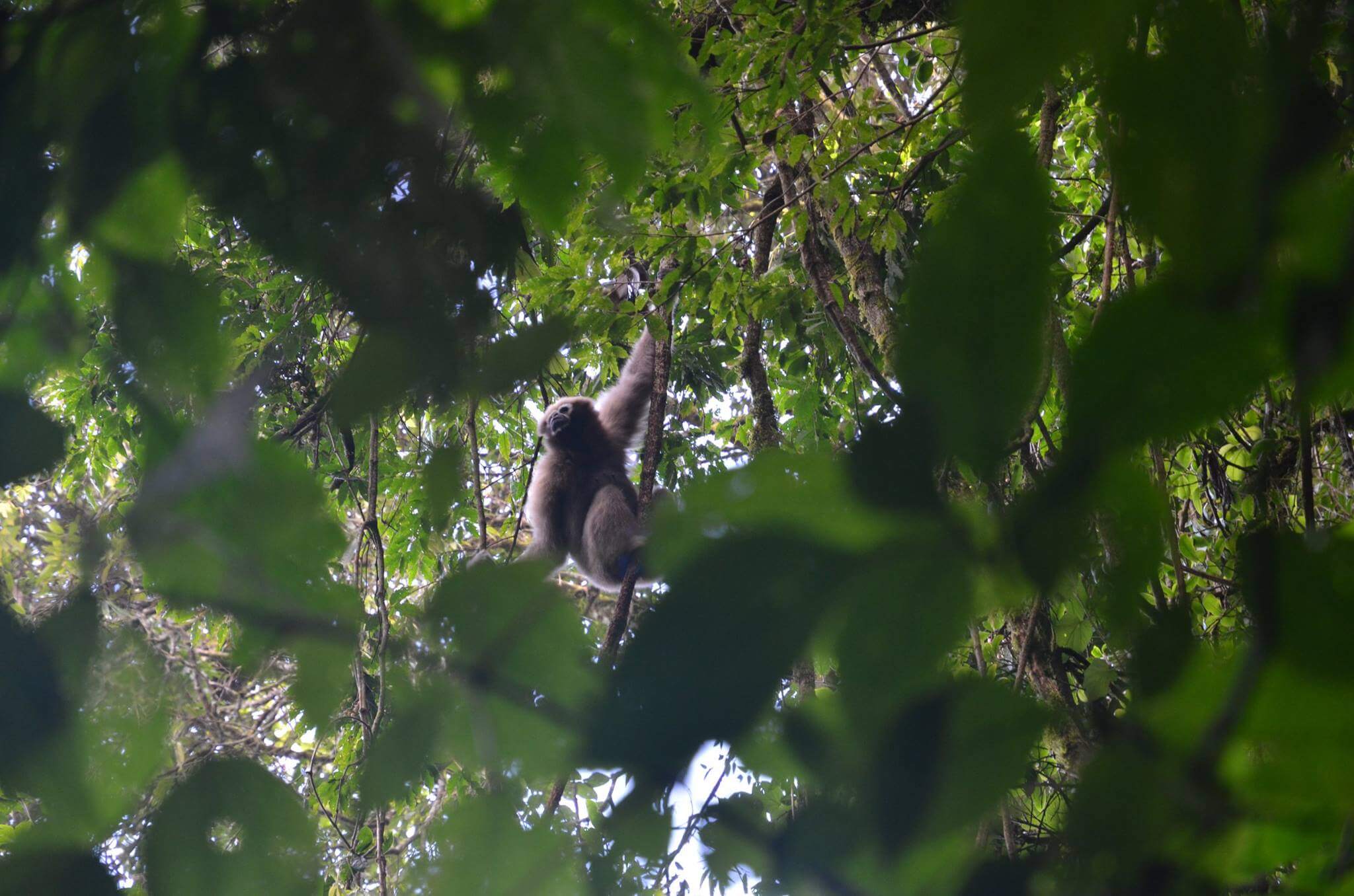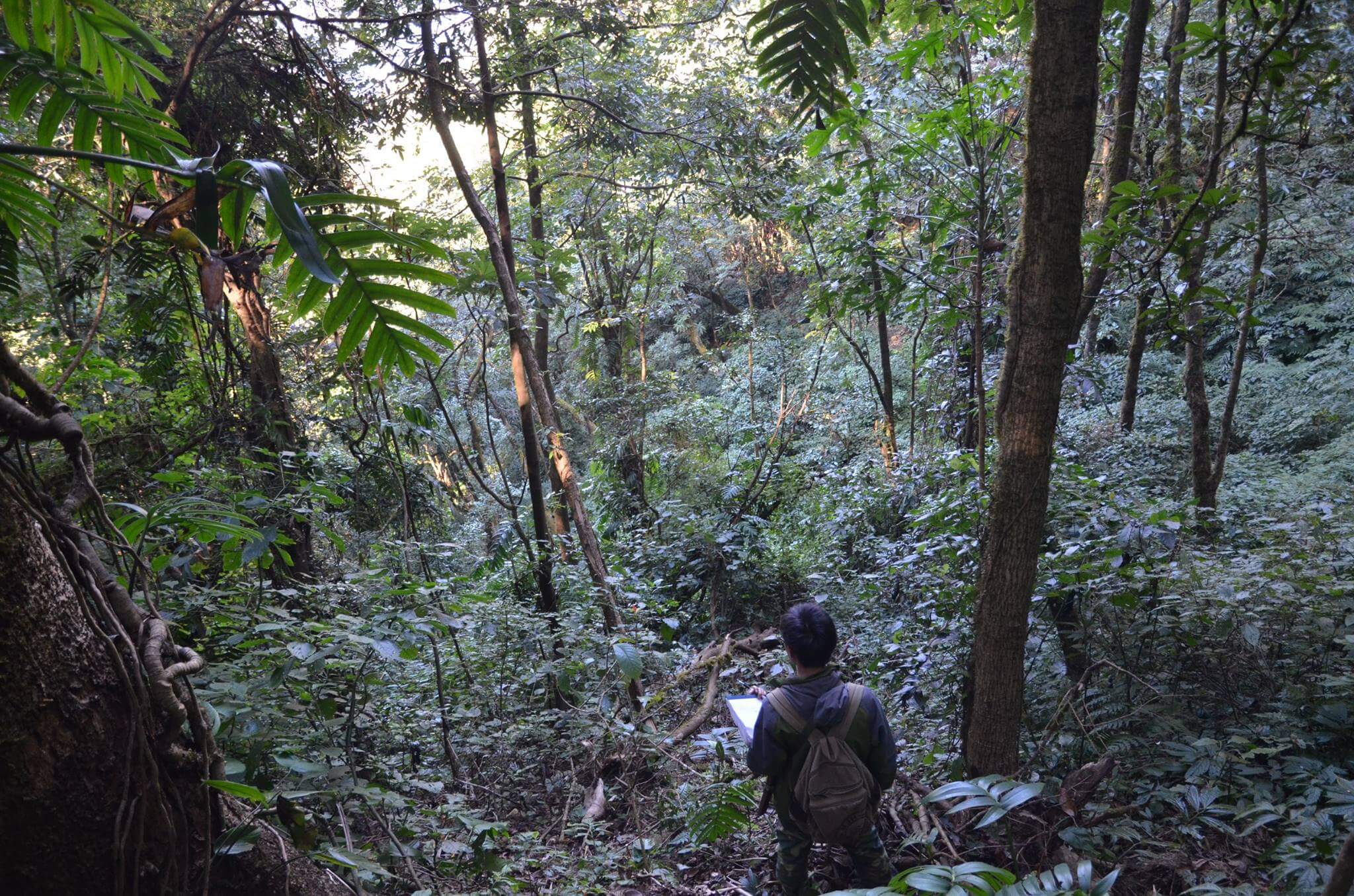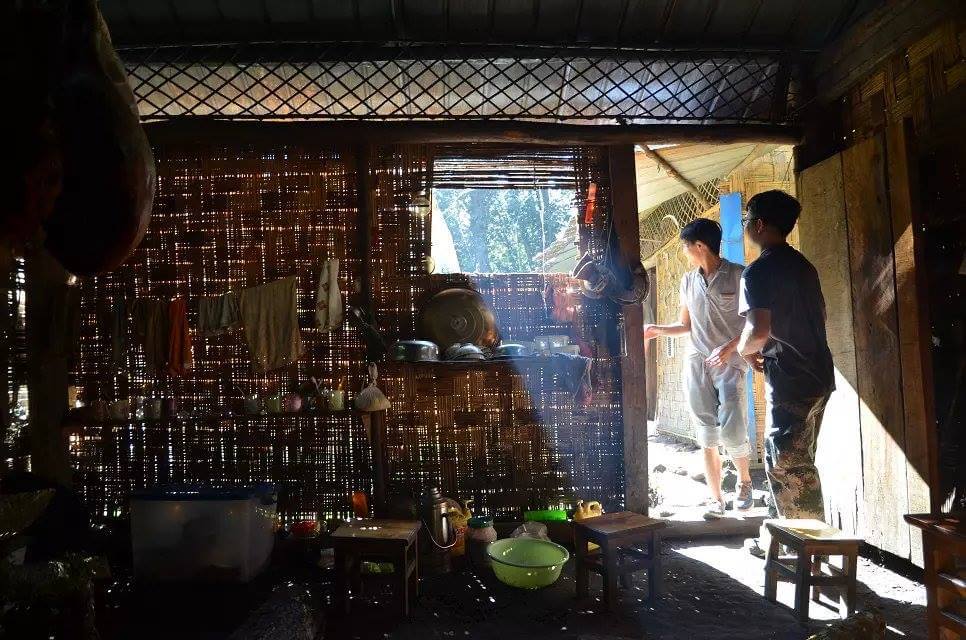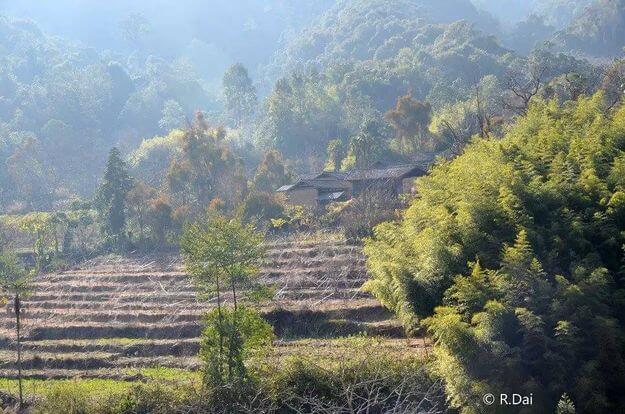From Widlife Research to Local Community: A Story of Life in Mt. Gaoligong
By Ran Dai
In 2014 – 2015, for 6 months I was part of a field research team working on the gibbons (Hoolock tianxing), a small ape inhabiting the subtropical evergreen forest of southwest China, close to the mountainous Sino-Myanmar border. This region harbors a high level of biodiversity with a 335,549 – ha protected area founded in the 1980s. “Gaoligong” as the reserved was named after referred to an ancient family once living in this area. A number of ethnic groups once lived or are living down this area. Among them, the Lisu was originated from Tibet in the north. Known for their skills of surviving in the mountains, however, in the 1990s hunting in this area was prohibited and many of them now lived in the small villages down the hills. Nowadays, much of the tradition is no longer seen in the Lisu people that we know of, most of whom have moved down the hills and resided in more modernized villages.

The endangered Hoolock Gibbon in one of our study groups in Mt. Gaoligong.

A Masters student, Xiaolong taking notes on gibbon behaviors by watching them from below.
The gibbon research camp comprised a number of small hubs, with walls made from lengthy bamboo-strips, woven up to form one large piece. Everything including the bamboo walls, the iron roof, utensils, equipment and food was carried by men or horses along a trekking trial which connected the camp to the nearest village (Banchang).
Two Lisu men were helping us managing the daily life in the camp and with orientation in the woods. Cai and Mi were both at their fifties. Like most males of or older than their ages, they were once excellent hunters and know this region pretty well. Each day, we would wake up before sunrise and ingest in a simple breakfast comprised usually of rice and salted meat. We would then follow the Lisu men and look for the animals. In the darkness with torchlight shinning a dizzying light ahead, I was dazzled by the speed of the men and the precision shown at locating places under very poor visibilities (maybe not for them). To keep up with their paces turned out to be quite challenging. Slipping my way/stumbling over the bamboo studs, tree roots, wet grass blades, and spiky thorns, just to keep the balance, I used to find losing sight of the guides (and the gibbons) easy, by paying too much attention to the ground conditions. It didn’t take long to realize that Mi could also do fast moving in an almost soundless manner, a key character for good (traditional) hunters; as human noises were easily detected by animals and spook them off. At the same time, Cai exhibited broad knowledges on what a jungle forest could offer, and exhibited techniques expected for a qualified fieldworker, such as knowing which plant was currently flowering or fruiting used by what animal species, and how to identify potential spots for a poacher to embed his traps into the ground. Up to today, near his retirement, Cai still serves a key member and consultant for the local ranger team.

Staff from the local ranger station standing near the kitchen of the research camp, with walls made of bamboo strips
The small village of Banchang had about a dozen of scarcely occupied residential houses, made of wood planks and mud, and surrounded by vegetation which indicated the different levels of human occupation. Up to 3 villagers were counted simultaneously at Banchang while we were there. Mainly due to the inconveniences living higher up here, such as in transportation and logistics, the majority of the former residents of Banchang now had their new homes down the hills. At first appearance, it seemed to me that Nature was taking back this village by extending a thick arm of vegetations into its every under-managed corner, about to drown it in a vast greenness.
The small village of Banchang seems to be swallowed by the forest behind it.
There was only one villager who, despite all the emigration trends that prevailed the past and the present, chose to stay behind alone. Qian is an old man living in a house located where the forest meets the village. He used to own over 40 goats which he took out for at least three hours a day and watched them feeding in the hills, where grassed grew wildly across the open area close to a half-abandoned motorway. A few years later, he was unable to do so since goats were believed detrimental to vegetations in the protected area (Banchang included). Then Qian made his living on Tsaoko (Lanxangia tsaoko, Zingiberaceae), a spice plant that he used to plant along a small stream near the village. Later on, when Tsaoko got banned as well, for the same reason as for the goats, for a time Qian almost lost his every source of income. The last time we met was a few months ago, when the old man had obtained himself hollow tree trunks, into which bees were introduced to build nests and generate honey for him to sell. About a dozen of young pigs had also arrived, feeding happily in a small pen, where fresh cabbage leaves scattered all over the muddy floor.
Nowadays most villages in Mt. Gaoligong have entered the modernized era where knowledge of the forest is no longer necessary part of their culture. Their villages look not much different from those commonly found in rural China. The “jungle school” intended for those working on data collection (often for short terms, myself included) shut down silently at the end of 2021, when the last researcher left the camp, followed by the retirement or retiring of the former guides, like Mi and Cai. With many of the villages also shrinking, it is worrying to see that an important part of the place is losing. I have learned most of what’s being in the field is like in Mt. Gaoligong from the Lisu. And I want to return the favor, and hope this project will bring some little changes to the place.


